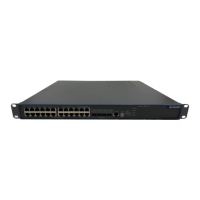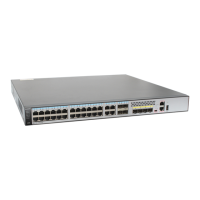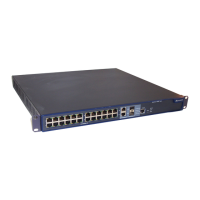Operation Manual - Getting Started
Quidway S5000 Series Ethernet Switches Chapter 4 User Interface Configuration
4-4
III. Configure parity on the AUX (Console) port
Table 4-5 Configure parity on the AUX (Console) port
Operation Command
Configure parity mode on the AUX (Console) port
parity { even | mark | none | odd | space }
Restore the default parity mode
undo parity
By default, the parity on the AUX (Console) port is none, that is, no parity bit.
IV. Configure the stop bit of AUX (Console) port
Table 4-6 Configure the stop bit of AUX (Console) port
Operation Command
Configure the stop bit of AUX (Console) port
stopbits { 1 | 1.5 | 2 }
Restore the default stop bit of AUX (Console) port
undo stopbits
By default, AUX (Console) port supports 1 stop bit.
V. Configure the data bit of AUX (Console) port
Table 4-7 Configure the data bit of AUX (Console) port
Operation Command
Configure the data bit of AUX (Console) port
databits { 7 | 8 }
Restore the default data bit of AUX (Console) port
undo databits
By default, AUX (Console) port supports 8 data bits.
4.2.4 Configure the Terminal Attributes
The following commands can be used for configuring the terminal attributes, including
enabling/disabling terminal service, disconnection upon timeout, lockable user
interface, configuring terminal screen length and history command buffer size.
Perform the following configuration in user interface view. Perform lock command in
user view.
I. Enable/Disable terminal service
After the terminal service is disabled on a user interface, you cannot log in to the
Ethernet switch through the user interface. However, the user logged in through the
user interface before disabling the terminal service can continue his operation. After

